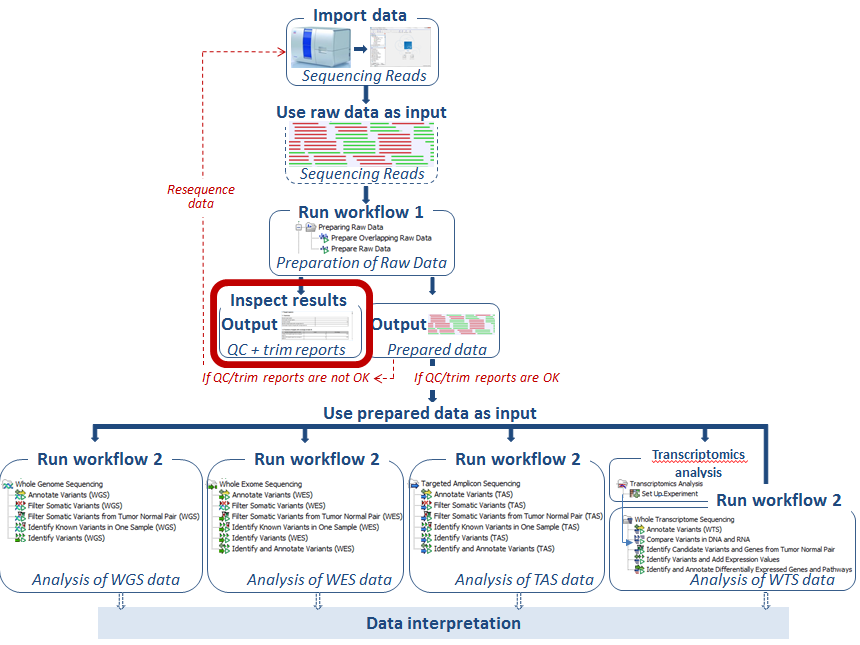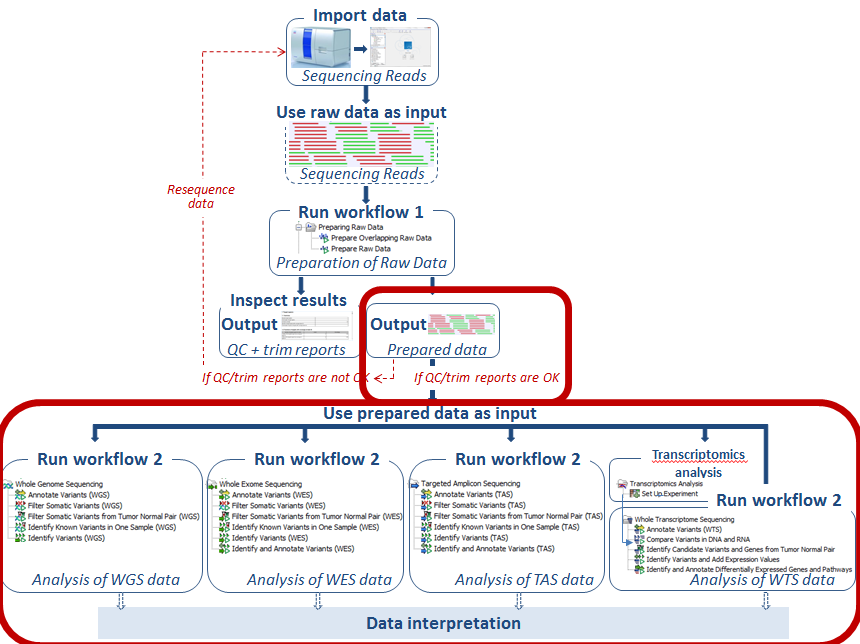How to check the output reports
We are now at the "Inspect results" step in figure 12.36.

Figure 12.36: Inspect the quality and trimming reports and determine whether you can proceed with the data analysis or if you have to resequence some of the samples.
Three different reports were generated by the workflows: a trimming report and two QC reports. All of these should be inspected in order to determine whether the quality of the sequencing reads and the trimming are acceptable. The interpretation of the reports is not always completely straightforward, but as you gain experience it becomes easier. For a detailed description of the QC reports and indication on how to interpret the different values, see QC Sequencing Report Content. For the trimming report, Trim output.
If you can accept the read quality you can now proceed to the next step and use the prepared reads output as input in the next ready-to-use workflow. If the quality of your reads is poor and cannot be accepted for further analysis, the best solution to the problem is to go back to start and resequence the sample.
You are now ready to perform the actual analysis of your sequencing data (see figure 12.37).

Figure 12.37: Use the prepared data as input in the relevant ready-to-use workflow, which we here for the sake of simplicity call "Workflow 2".
